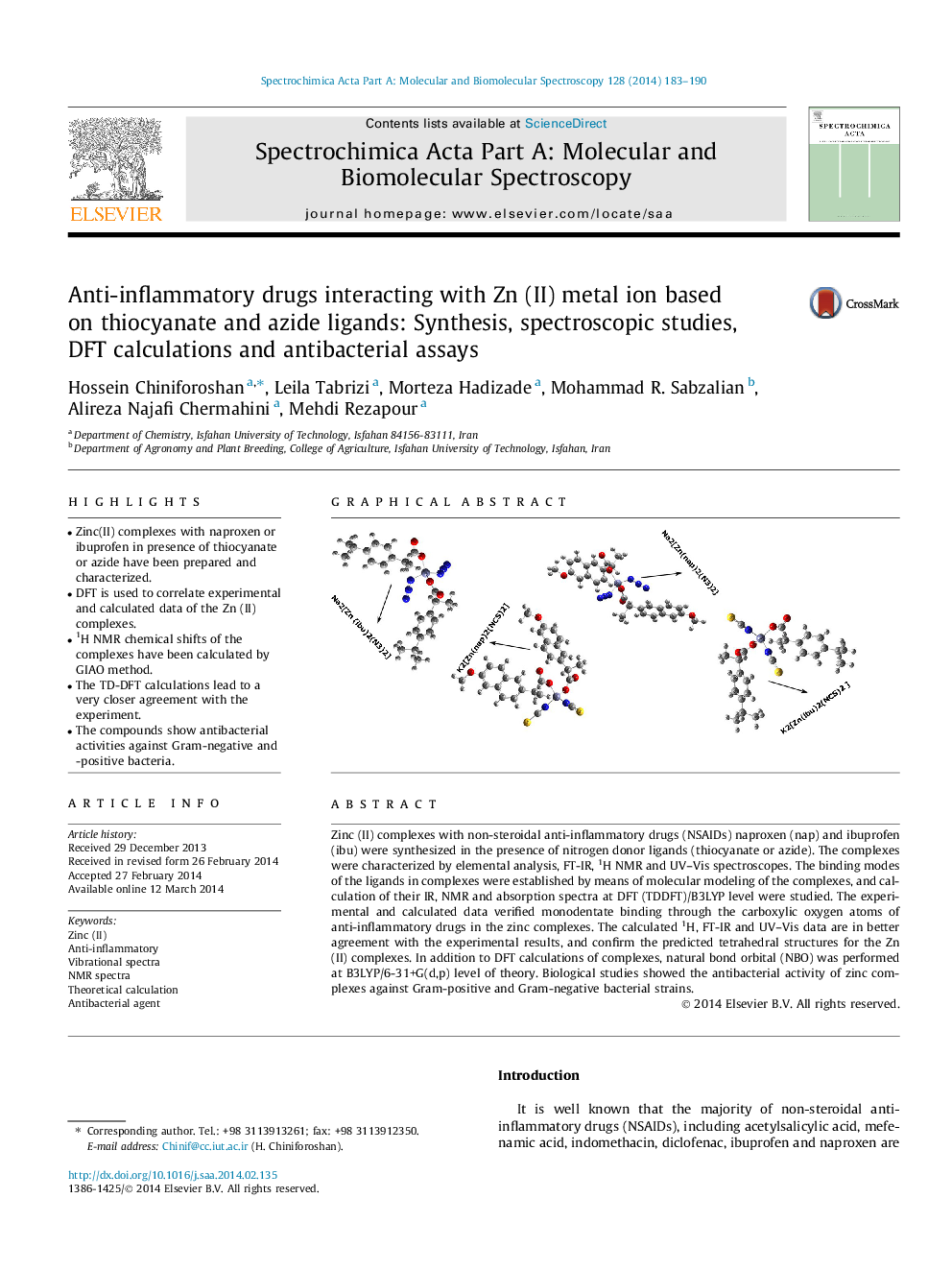| Article ID | Journal | Published Year | Pages | File Type |
|---|---|---|---|---|
| 1230558 | Spectrochimica Acta Part A: Molecular and Biomolecular Spectroscopy | 2014 | 8 Pages |
•Zinc(II) complexes with naproxen or ibuprofen in presence of thiocyanate or azide have been prepared and characterized.•DFT is used to correlate experimental and calculated data of the Zn (II) complexes.•1H NMR chemical shifts of the complexes have been calculated by GIAO method.•The TD-DFT calculations lead to a very closer agreement with the experiment.•The compounds show antibacterial activities against Gram-negative and -positive bacteria.
Zinc (II) complexes with non-steroidal anti-inflammatory drugs (NSAIDs) naproxen (nap) and ibuprofen (ibu) were synthesized in the presence of nitrogen donor ligands (thiocyanate or azide). The complexes were characterized by elemental analysis, FT-IR, 1H NMR and UV–Vis spectroscopes. The binding modes of the ligands in complexes were established by means of molecular modeling of the complexes, and calculation of their IR, NMR and absorption spectra at DFT (TDDFT)/B3LYP level were studied. The experimental and calculated data verified monodentate binding through the carboxylic oxygen atoms of anti-inflammatory drugs in the zinc complexes. The calculated 1H, FT-IR and UV–Vis data are in better agreement with the experimental results, and confirm the predicted tetrahedral structures for the Zn (II) complexes. In addition to DFT calculations of complexes, natural bond orbital (NBO) was performed at B3LYP/6-31+G(d,p) level of theory. Biological studies showed the antibacterial activity of zinc complexes against Gram-positive and Gram-negative bacterial strains.
Graphical abstractFigure optionsDownload full-size imageDownload as PowerPoint slide
